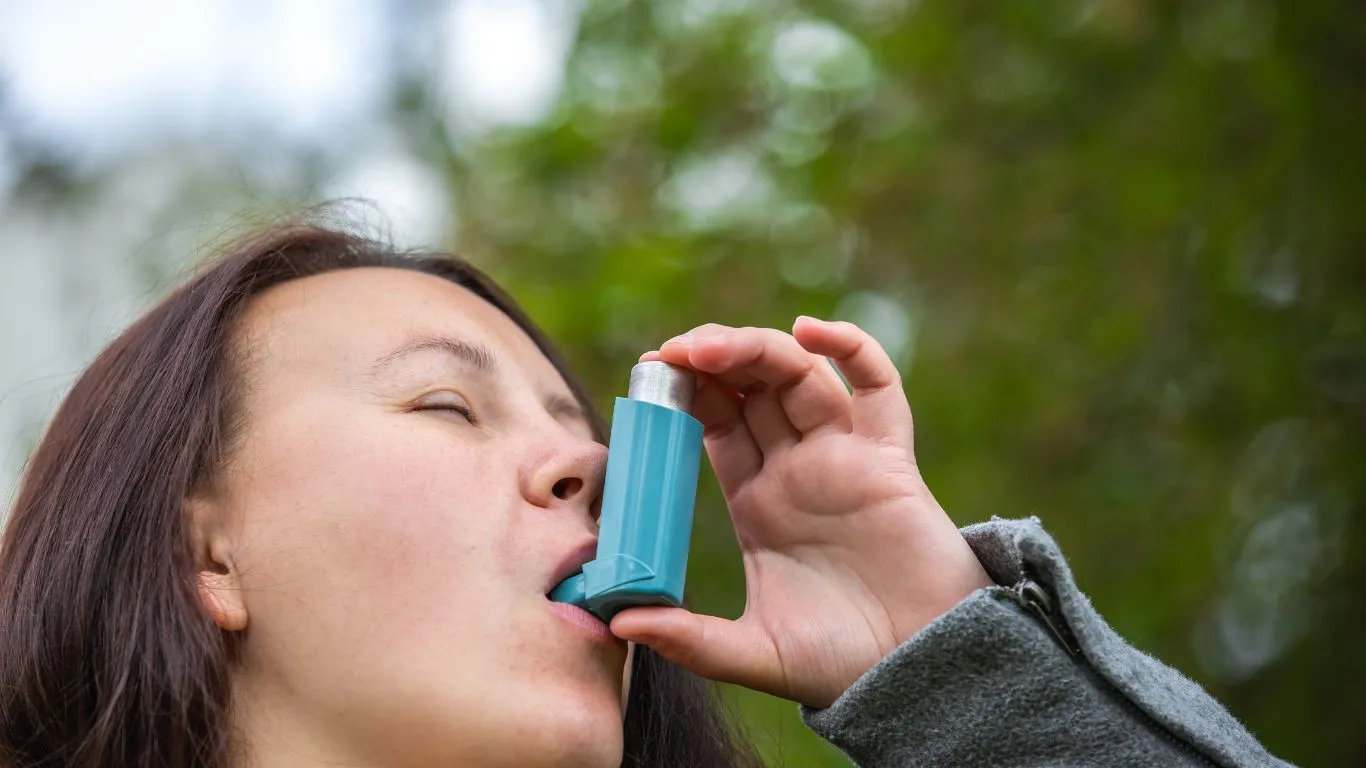How Weather Changes Impact Asthma Symptoms and What You Can Do
Living with asthma can feel like navigating a minefield sometimes—especially when the weather can flip your entire day upside down. As someone who’s worked for years as a pulmonary nurse, I’ve seen firsthand just how dramatically how weather changes impact asthma symptoms. One minute, a patient is breathing fine, and the next, a cold front or humid wave sets off wheezing, coughing, and tightness that just doesn’t let up. It’s not just frustrating—it’s scary. And a lot of folks don’t realize how tied their breathing is to Mother Nature’s mood swings.
Why the Weather Messes with Your Lungs

Let’s break it down—when you live with asthma, your airways are already sensitive. Throw in sudden temperature drops, rising pollen levels, or a humid day that feels like you’re breathing through a wet sponge, and boom—your lungs start rebelling. The weather doesn’t just change what you wear; it changes how you breathe.
Cold Air: A Common Culprit
In the clinic, wintertime is our unofficial “asthma season.” Cold air is dry, and when someone with asthma inhales that chilly breeze, their airways can tighten fast. It’s almost like your lungs are saying, “Nope, not today.” Patients often describe that tight, scratchy feeling that hits the second they step outside. Some even experience a burning sensation in their chest when the air is especially frigid. Sound familiar?
One of my longtime patients used to say walking to the mailbox in December felt like “breathing in tiny needles.” That’s exactly what cold, dry air can do to inflamed bronchial tubes—it irritates them, making asthma flare-ups a lot more likely.
Humidity: Sneaky and Suffocating
Then there’s the flip side—humidity. It might seem harmless, even soothing, but it can trap airborne allergens and pollutants, making it harder for those with asthma to catch a break. High humidity also tends to make the air feel heavier and more difficult to breathe. It’s like dragging your lungs through syrup. For folks with asthma, this can lead to increased shortness of breath, chest tightness, and a feeling of exhaustion after just a short walk.
Here’s a tip I always give patients when the humidity soars: use a dehumidifier indoors and stick to early mornings or late evenings if you need to be outside. The mid-afternoon heat mixed with high humidity is a recipe for a respiratory meltdown.
How Barometric Pressure Throws Us Off

Here’s something not everyone considers—barometric pressure. It’s one of those sneaky weather elements you can’t see, feel, or smell, but boy, can you sense it if you have asthma. I remember one woman who tracked her asthma symptoms in a journal for months, and the pattern was crystal clear: whenever the barometric pressure dropped before a storm, her breathing tanked.
What’s Actually Happening?
When pressure in the atmosphere drops, it can make the air more turbulent and dense with allergens or irritants. This shift causes the airways to narrow and mucus to thicken—two things that are basically asthma’s worst enemies. And if there’s a storm brewing? That’s even more of a trigger. Thunderstorms, in particular, can whip pollen particles into smaller fragments that are easier to inhale. Cue the wheezing.
Why It’s Not “Just in Your Head”
Trust me, you’re not imagining it. This is real. I’ve seen ERs fill up on stormy days when people’s inhalers just don’t seem to cut it. Understanding these environmental factors isn’t about paranoia—it’s about power. When patients recognize the signs and know what their body is trying to tell them, they can actually do something about it. Which brings me to a super important part of managing asthma year-round…
Seasonal Allergens & Their Link to Weather

Now, let’s talk about seasonal allergens—the villains that love to hitch a ride on weather patterns. Pollen, mold, and even dust mites aren’t just annoying; they’re asthma accelerants, especially when they’re floating around in warm, windy air or after a heavy rain.
Spring and Fall: Allergy Overload
Springtime is beautiful, no doubt. But for people with asthma, it can be brutal. All that blooming brings massive pollen releases, and the wind doesn’t help. Every time the breeze picks up, it’s basically nature’s version of shaking a pollen-filled snow globe over your neighborhood.
Then there’s autumn—leaves start to decay, and mold spores go wild. One of my patients used to get hit hard every October because of the combination of damp leaves and unpredictable temps. She eventually learned to check local pollen counts and mold reports before planning her day—and honestly, it changed her life.
Rainy Days Aren’t Always a Relief
It might seem like rain would wash allergens away, but right after a rainfall? That’s when pollen can get broken into tiny, more inhalable pieces. The result? More asthma symptoms, not fewer. And if there’s mold nearby (hello, soggy basements), the moisture gives it a perfect breeding ground.
- Tip: Stay indoors during and right after storms, and keep windows shut even if the air smells amazing. That fresh post-rain air might carry microscopic irritants your lungs won’t love.
How Wind and Wildfires Stir Up Asthma Trouble

Okay, let’s talk about wind. It might seem harmless, even refreshing, but when you live with asthma, a gusty day can be an open invitation for a flare-up. Wind doesn’t just move air around—it kicks up pollen, dust, mold spores, and in some cases, even wildfire smoke. I’ll never forget last summer when we had back-to-back wildfires across multiple states. Even though my patient was hundreds of miles away, her asthma spiraled out of control just from the smoke that drifted in on the wind.
The Dangerous Mix of Wind and Smoke
Wildfire smoke is especially nasty. It’s full of fine particles that can burrow deep into your lungs, way past the body’s natural defenses. For people with asthma, this can mean days of relentless coughing, wheezing, and shortness of breath that doesn’t seem to let up—even indoors. And you don’t have to live near the fire zone to be affected; smoke can travel hundreds of miles depending on wind direction.
If the air smells smoky or the sky looks hazy, that’s your cue to close the windows, run a HEPA air purifier if you’ve got one, and limit your time outside. I always tell my patients to keep an N95 mask on hand—not just for pandemics, but for smoky days too.
Temperature Swings and Asthma Flares

You know those days when it’s 50°F in the morning and somehow 85°F by lunch? Yeah, those dramatic temperature swings can absolutely mess with your lungs. I’ve had patients come in wondering why their symptoms are suddenly worse, and after a little digging, it turns out the weather made a sharp turn and their body couldn’t keep up.
Why the Body Doesn’t Like Quick Shifts
Asthma thrives on stability—or at least, it doesn’t thrive when things change rapidly. A sudden drop or rise in temperature can irritate the lining of the airways, triggering inflammation or making pre-existing inflammation worse. When your lungs are already on edge, that shift can be the straw that breaks the camel’s back.
Even indoor environments can cause trouble. Say you step out of a cold shower into a warm, steamy bathroom or exit an air-conditioned store into a sweltering parking lot—your lungs notice, and they don’t always like it. One patient told me her asthma got triggered just by moving from her frigid office to the humid sidewalk during lunch breaks.
- Pro tip: Keep your environment as consistent as possible. Dress in layers so your body adjusts gradually, and use humidifiers or air conditioning with moderation—not extremes.
How Weather-Driven Pollution Levels Spike Symptoms

Something else to consider—pollution. Weather plays a huge role in how much pollution lingers in the air, especially in urban areas. Hot, stagnant days can trap pollutants like ozone and car exhaust close to ground level, creating a breathing hazard that’s hard to escape. And yes, this definitely makes asthma worse.
The Ozone Effect
Ozone is one of those invisible threats that’s worse on warm, sunny days. It forms when sunlight reacts with pollutants from vehicles and industrial activity. You can’t see it, but you can feel it—especially in your lungs. It makes breathing feel shallow, increases coughing, and causes that irritating tightness in your chest that just won’t go away.
And it’s not just big cities—suburban and even rural areas downwind from cities can get hit with high ozone levels too. I always encourage people to check the local air quality index (AQI) on their weather app before planning any outdoor time. If the AQI is orange or worse, it’s better to move that workout indoors or reschedule that picnic.
Pollution and Weather: A Nasty Combo
When the weather’s hot and still, it’s like a pollution pot simmering on low heat. Nothing moves. That trapped air gets thick, heavy, and just… gross. And for someone with asthma? It can turn a regular day into an ER visit. I’ve seen it more times than I can count.
- Use apps or websites like AirNow or your local weather station to track AQI.
- Avoid outdoor exercise when pollution levels are high.
- Invest in a high-quality indoor air filter if you live in a high-traffic area.
Weather-Preparedness Tips for Asthma Warriors
By now, it’s clear that weather is more than just background noise when it comes to asthma. It’s a real factor—and one that requires a bit of planning. Luckily, a few proactive steps can go a long way in helping manage symptoms no matter what the forecast throws your way.
Your Personal Asthma-Weather Toolkit
Here’s what I recommend for patients who want to stay one step ahead:
- Keep a Symptom Journal: Track how your asthma reacts to different weather events. It’s one of the most eye-opening things you can do.
- Download a Weather + AQI App: Set alerts so you’re not caught off guard when conditions take a turn.
- Create an Emergency Plan: Talk with your doctor about what to do when symptoms spike unexpectedly. Have your rescue inhaler ready, and make sure it’s not expired (you’d be surprised how often that happens!).
- Layer Up & Stay Cool: Adapt your clothing and indoor environment to avoid sudden exposure to extreme temps.
- Control Your Indoor Air: Use purifiers, dehumidifiers, or humidifiers depending on the season. Clean regularly to keep allergens like dust and mold in check.
Living with asthma doesn’t mean you have to live in fear of the forecast. But it does mean being tuned into your environment, knowing your triggers, and making smart adjustments. I’ve seen patients go from feeling completely overwhelmed to confidently managing their symptoms with just a few simple changes. And it all starts with understanding the impact weather really has on your breathing.
Daily Routines That Help Weatherproof Your Lungs

By now, you’ve probably realized that how weather changes impact asthma symptoms isn’t just some random coincidence—it’s a real and significant factor in day-to-day respiratory health. But the good news? A few mindful habits can go a long way in helping your lungs stay calm, no matter what’s happening outside.
In my years as a pulmonary nurse, I’ve seen how powerful a solid routine can be. It’s not just about taking medications—although that’s crucial. It’s about weaving asthma awareness into your daily lifestyle. One patient of mine turned her health around by creating what she called a “weather-proof wellness plan”—basically a series of small actions that helped her stay in control instead of letting the forecast run her life.
Morning Check-ins: Know Your Air
Start your day with a quick check of the air quality index (AQI) and weather forecast. It only takes a minute, but it sets the tone for smarter choices throughout the day. If the AQI is high or there’s a weather advisory, you’ll know to adjust your plans—maybe swap that outdoor jog for yoga in the living room, or delay errands until things settle.
Hydration and Nutrition Matter More Than You Think
Keeping your body well-hydrated helps thin out mucus in your airways, making it easier to breathe. And what you eat can impact inflammation too. I always suggest including more anti-inflammatory foods—think berries, leafy greens, fatty fish, and turmeric. A patient of mine swore that swapping out processed snacks for fresh fruits actually reduced her wheezing during allergy season. It’s not magic, but it sure doesn’t hurt.
Breathing Exercises for Resilience
Don’t underestimate the power of a few minutes of deep, mindful breathing. Practicing techniques like pursed-lip breathing or diaphragmatic breathing can strengthen lung function and reduce anxiety—especially during a weather-triggered flare. I’ve walked countless patients through these during appointments, and the surprise on their faces when they realize they’re breathing easier is always rewarding.
When to See a Specialist (Yes, Even If You Think You’re Fine)

Here’s the thing—just because you’ve “managed” your symptoms doesn’t mean there’s no room for improvement. A lot of people live in what I call “survival mode”—they think constant coughing or needing their rescue inhaler daily is just part of the deal. Spoiler alert: it’s not.
Red Flags You Shouldn’t Ignore
If you’re noticing these patterns, it’s time to check in with a specialist:
- You’re using your rescue inhaler more than twice a week.
- Weather changes seem to trigger symptoms every time.
- You’re waking up at night because of wheezing or coughing.
- Daily tasks feel harder than they used to because of shortness of breath.
These signs mean your asthma isn’t as controlled as it could be. Working with a pulmonologist or an allergy specialist can make a massive difference. I’ve seen patients go from multiple ER visits a year to barely needing their rescue meds. The key is addressing the root of the problem—often, it’s linked to unmanaged triggers like seasonal changes or indoor air quality.
Advocating for Yourself as a Patient
Don’t be afraid to speak up. Bring a symptom journal. Ask questions. Share what weather patterns seem to affect you most. Your lived experience is just as important as your lung function numbers, and a good provider will listen. And hey, if they don’t? Find one who will.
Technology Tools That Can Help You Stay Ahead
In this tech-savvy world, managing asthma doesn’t have to rely solely on guesswork and memory. There are some great tools out there now that combine weather tracking with asthma symptom monitoring. Some of my patients love smart inhalers that track usage patterns and sync with apps to show trends. Others use air quality apps that send alerts when the environment turns hostile for breathing.
Helpful Tools to Explore
- MyAsthma App: Helps track symptoms, meds, and triggers—some even integrate with your healthcare provider.
- Plume Labs’ Air Report: Real-time pollution and AQI updates customized to your location.
- Smart Peak Flow Meters: Devices that connect to your phone and give accurate readings of your lung function over time.
It’s empowering to see the data in front of you. It turns your asthma experience into something measurable, trackable, and more manageable. One mom I worked with even used her child’s symptom tracking app to identify that cold, damp mornings were the culprit—and that helped the school make simple adjustments to indoor PE scheduling. Small shift, big difference.
Final Thoughts: Weather Might Change, But You Can Adapt
If there’s one thing I’ve learned after years in pulmonary care, it’s that asthma management is deeply personal. What works for one person might not for another—but recognizing how how weather changes impact asthma symptoms is a universal game-changer. It’s not about avoiding life; it’s about preparing for it. Learning to read the signs, listening to your body, and having the right tools on hand can make all the difference.
So whether it’s a heatwave, a thunderstorm, or a smoky wildfire season, just know that you’re not powerless. You’ve got options. And with the right knowledge and support, you can breathe easier—whatever the forecast says.
Helpful References
- National Institutes of Health
- Health.com
- Centers for Disease Control and Prevention
- Asthma and Allergy Foundation of America
Disclaimer
This content is for informational purposes only and does not substitute professional medical advice, diagnosis, or treatment. Always consult with your healthcare provider about your specific condition or symptoms.

Bianca Nala is a compassionate Nurse Practitioner with a strong background in primary and respiratory care. As a health writer for Healthusias.com, she combines her clinical expertise with a talent for clear, relatable storytelling to help readers better understand their health. Bianca focuses on topics like asthma, COPD, chronic cough, and overall lung health, aiming to simplify complex medical topics without losing accuracy. Whether she’s treating patients or writing articles, Bianca is driven by a single goal: making quality healthcare knowledge accessible to everyone.






